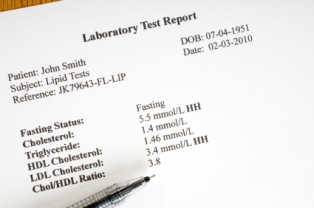Air Pollution May Spark Adult-Onset Diabetes
In a new study that will appear in the journal Environment Health Perspectives, air pollution was linked to increased incidence of diabetes 2 or adult-onset diabetes.  The study involved respondents in Germany who lived in heavily polluted industrial areas.
The study was first initiated in the eighties.  After sixteen years, researchers made a follow-up study and found out that many of their original respondents (many aged fifty and up) now have type-2 diabetes.  Out of 1,775 of the total number of respondents in the long-term study, it was found that 187 of the respondents (all women) developed the degenerative condition by late 2006.
How did it happen?¬† Researchers are still non-conclusive, but there are many solid theories surrounding the phenomena.¬† Many doctors agree that lifelong exposure to pollutants can set off a biological chain reaction in the body, which produces chronic inflammation that affects many of the body’s organs and functions.
Many doctors agree that inflammation is a significant contributing factor to the development of type 2 diabetes.  According to Rashmi Gulati MD of New York City, breathing in polluted air does not help prevent type 2 diabetes.  Couple this with the Couch Potato syndrome and unhealthy eating patterns and a person is at higher risk for many health conditions, not just diabetes 2.
Type 2 diabetes
What is type 2 diabetes? Type 2 diabetes occurs when one or both of these happen: the body does not produce enough insulin to break down the blood sugar or the body’s cells are no longer sensitive to the natural insulin produced by the body.
When either of these happen, the sugar in the body accumulates, leading to damage to many of the body’s organs over the long term.¬† Diabetics are at higher risk for heart diseases and stroke, as well.¬† Slow wound healing and gangrene are also potential risks that face the type 2 diabetic.¬† Type 2 diabetes is not limited to adults.¬† Increasingly, this disease has manifested in overweight children.
The most common treatment for type 2 diabetes is insulin shots and medication like metformin, which is used to control blood sugar levels and bring down blood sugar levels to normal.  If left untreated, diabetics can suffer from neuropathies and even vision loss as well.
Protect yourself from air pollution
There are several steps to avoid the hazards of air pollution:
- Air pollution can adversely affect your respiratory tract.  If you live in a heavily polluted area, make sure that you get more than enough water everyday.  Water helps carry away toxins and also keeps your respiratory system working efficiently.
- Avoid areas that have declared high ozone levels.
- If you have to go out near heavily polluted areas, wait until sunset before going out.  The higher the sun is up in the sky, the higher the ozone content of the air.
- If there is a wildfire near your neighborhood, close your doors and windows and seal any cracks or openings with tape.¬† This will create a limited ‘clean zone’ that prevents most of the smoke from outside from entering your home.
- Invest in vitamin supplements ‚Äď especially those that are high in easily-absorbed vitamin C.¬† Vitamin C strengthens the lungs and protects you from the harsh effects of air pollution.
- Exercise regularly so your body can naturally detoxify. Many toxins are stored in the body’s tissues.¬† When you exercise, these toxins are transported outside of the body.¬† With regular exercise, you will feel lighter and more energized because you have less toxin load in your body.
- If you live in a highly polluted area and you need to use your bike or motorcycle, do wear a dust mask.
Sources:
aolhealth.com
sixwise.com
fitness.ygoy.com
iqair.com
Posted: June 1st, 2010 under Air Pollution, Diabetes.
Tags: Adult-onset diabetes, Air Pollution, type-2 diabetes
Comments: none


















